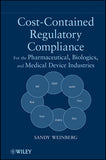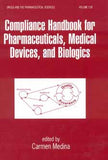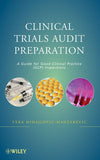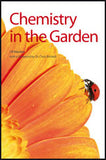Antiaging Physiology to Formulation; Cosmetics & Toiletries Formulators' Resource
This Book offers the cosmetic chemist a compendium of information on antiaging products products in this handbook.
From physiology to finished product, this book is crucial to formulators working in, or interested in growing as rapidly as this sector.
Antiaging: Physiology to Formulation includes:
- ingredients
- intervention
- testing
- claim substantiation
- physiology
- and more!
Topics covered include: naturals, new methodologies, skin lighteners, novel ingredients and age-effect inhibitors, and more.
For those who are interested in formulating either mass-market products or prestige lines, this book is beneficial.
Contents
Chapter 1: Physiology
- Wrinkles from UVA Exposure
- Participation of Metalloproteinases in Photoaging
- Pigmentation, Swelling and Wrinkling in the Eye Area
- Cell Adhesion: A New Approach to Tissue Protection
- Measured Dermal Effect of Applying Retin-A
Chapter 2: Intervention and Ingredients
Botanicals
- Oat Fractions
- New Active Ingredient for Aging Prevention
- Galactomannan and Xyloglucan: Bio-Active Polysaccharides
- Take Tea and See
- Sweet WhiteLupine Extract as a Skin Restructuring Agent
- Centella asiatica and Skin Care
- Tinged Autumnal Leaves of Maple and Cherry Trees as Potent Antioxidant Sources
- b-(1,6)-Branched b-(1,3)-Glucan in Skin Care
- Artemia Extract: Toward More Extensive Sun Protection
- Topically Applied Soy Isoflavones Increase Skin Thickness
- Whitening Complex with Waltheria indica Extract and Ferulic Acid
- A Botanical Anti-Sagging/Firming Blend
- Anti-Wrinkle Activity of Hydrolyzed Ginseng Saponins
- Phytoestrogens: Applications of Soy Isoflavones in Skin Care
- Multifunctional Ingredients: The Novel Face of Natural
- Innovative Natural Active Ingredient with Anti-Inflammatory Properties
- Low Molecular Weight Tannins of Phyllanthus emblica: Antiaging Effects
- A New Active from Germinated Seeds Boosts HSP Expression in Skin�s Natural Defenses
Hyaluronans
- Hyaluronan: History and Biochemistry
- Hyaluronan: Biology, Pathology and Pharmacology
- Hyaluronan: Metabolism and Modulation of Hyaluronan Levels in Skin
Lighteners and Whiteners
- Skin-Whitening Agents
Metalloproteinase Inhibitors
- The Inhibition of Metalloproteinase by Macrocystis pyrifera Extract
- Controlling MMPs During Skin Whitening
Vitamins
- Ascorbic Acid and Its Derivatives in Cosmetic Formulations
- The Synergistic Antioxidative Effect of Ascorbyl 2-Phosphate and a-Tocopheryl Acetate
- Skin Antioxidants
Water (seaweed, etc.)
- Efficacy Testing of a Brown Seaweed Extract
- Active Substances From The Sea
- Phytoplankton: The New Frontier for Stress-Relieving Cosmetic Ingredients,
Permeability
- Penetration of Vitamin A Palmitate into the Skin
- Defending Against Photoaging: A New Perspective for Retinol
- Moisturizing Potential of d-a-tocopherol
- Polyethoxylated Retinamide as an Anti-Wrinkle Agent
Other
- A Collagen III Amplifier System
- Effects of Gelatin-Glycine on Oxidative Stress
- Potassium Azeloyl Digycinate: A Multifunctional Skin Lightener
- Dietary/Nutritional Supplements: The New Ally to Topical Cosmetic Formulations?
- New Laminin Peptide for Innovative Skin Care Cosmetics
- Copperceuticals and the Skin
- Targeting the Cutaneous Nervous Network
- Reflecting on Soft Focus
- Building a Better Barrier for the Inside Out
- Applications of Essential Fatty Acid in Skin Care, Cosmetics and Cosmeceuticals
Chapter 3: Claim Substantiation and Testing
- Scratching the Skin Surface
- Photoaging and Photodocumentation
Chapter 4: Formulation Considerations
- Influence of a Formulation�s pH on Cutaneous Absorption of Ascorbic Acid
- O/w Emulsions Enriched with Vitamin E
- A Triply Stabilized System to Improve Retinol Stability
- Delivering Antiaging Actives
Index

















